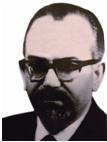About - پرتال اصلی دانشگاه رازی
History of Razi University
Razi University started its activities in February 1351 in Kermanshah, which is one of the temperate regions of the west of the country, with the title of Faculty of Science by the late Dr. Abdolali Goya, and at the beginning of the 1351-1351 academic year by accepting 200 students in four fields. Physics, chemistry, biology and mathematics began their existence. Later, with the establishment of Kermanshah Medical School, Tarbiat Dabir Sanandaj and Ilam School of Animal Husbandry, Razi University was developed and after the revolution, these faculties were separated from Razi University and continued their activities as Kermanshah University of Medical Sciences, Kurdistan University and Ilam University. .
Razi University currently has 17 faculties and campuses of agriculture and natural resources and using the knowledge and expertise of 31 professors, 122 associate professors, 277 assistant professors, 13 instructors and a total of 443 faculty members in 57 departments and about 12,000 students in four Associate degree, bachelor's, master's and professional doctorate (general) and specialized doctorate continue their activities.
Biography of the founder of the university

Dr. Abdolali Goya started his career in 1300 AD in Qom city. But in the first years of his life, he moved to Kermanshah with his family and settled there. It was in this city that he completed his primary and secondary education and in 1317, after obtaining a certificate of the second year of high school (diploma) in mathematics, he went to Tehran to continue his education and studied higher education in physics and chemistry at the faculty University of Tehran paid.
In 1320, he succeeded in obtaining a bachelor's degree in physics and chemistry and then went to the city of Hamedan to teach. After three years of teaching in Hamedan, he returned to Tehran and while teaching in Tehran high schools and several colleges and universities, in 1326. He also obtained a bachelor's degree in law and succeeded in obtaining a master's degree in physics. After that, in 1339, he went to France to continue his studies, and after obtaining a doctorate degree in "Mathematics-Physics" (in 1342) returned to Tehran.
After returning to Tehran, he taught physics at the University of Mashhad (in the city of Mashhad) in the faculties of science and medical sciences, and taught faculty and physics at the Faculty of Theology. His method at the Theological Seminary was such that he always moved from physics and physics to religious discussions, which was quite new, and the students of the Theological Seminary at that time - although many years have passed since then - still have fond memories of that time. .
In 1350, on behalf of the University of Mashhad, he was commissioned to establish the Faculty of Science and several other faculties to move to Kermanshah (his original homeland), and in fact he should be considered the founder of Razi University. In 1978 (after the victory of the Islamic Revolution of Iran) he was appointed as the director of the National Library and Museum of Malek in Tehran by the patron saint of Astan Quds Razavi - considering his long religious background in Tehran, Mashhad and Kermanshah. Worked. Finally, at noon on Sunday, October 30, 1995, he passed away and returned to his home.
